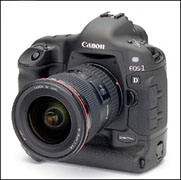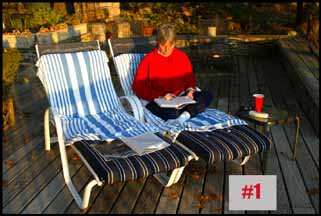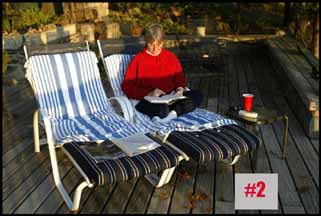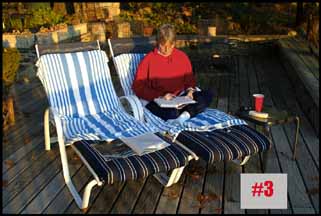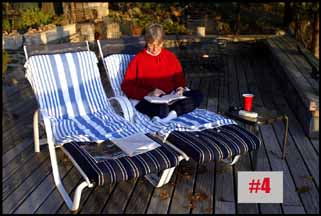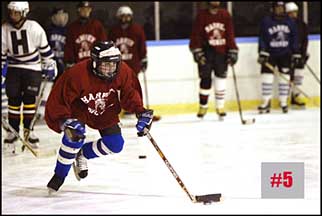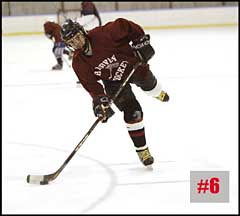Okay, let's get to the point - The new Canon EOS-1D is a great camera if you're shooting sports or general news. The EOS-1D can shoot JPEG and RAW files simultaneously (this may be helpful after a usable Raw Converter comes out), create custom file folders, has a 1/500 flash sync, fast shutter release time, weatherproofed body and many more "pro" features. With that said, here is a report of my experience with the camera we've been waiting two years for. I picked-up my test camera from Chuck Westfall at the Canon USA Headquarters for this review. Chuck spent about 2 hours with me going over the camera and software operations until I had it down. One thing I found out even before leaving Canon was, that if the plan is to shoot RAW images, the Canon software is definitely "not ready for prime time." It not only takes too much time for the images to load but any changes you want to make to any particular image are NOT in "real time" and so you're changing the image totally blind until you see it corrected a minute or so later. It is extremely frustrating. (Think about doing Photoshop without seeing any changes you've made until you hit "save" and a minute later you see what you did!) Why Canon didn't include a simple RAW Converter like they have for the D-30 is beyond me. The D-30 Converter is simple, fast and you can see the changes quickly. (Sorry, EOS-1D images will not convert in the D-30 converter - I tried.) Maybe this is good if you're planning on using the camera to shoot a few snaps of fall foliage and have a day or two to play with the images. This is not good when you have 10 images to process and transmit for a deadline from a moving van between campaign stops (which is what I need to do). When Canon came out with their most recent RAW Converter for the D-30, I started shooting most of my work in RAW mode. I like being able to lower the contrast since I have to photograph a lot in heavy backlight, with very bright and dark areas in the scene. This really helped to get back more detail at the extreme ends of the tonal scale. The software is good when changing the parameters of the camera, like changing the Personal Functions which are like Custom Functions but more....well, personal to the user. Between the software parameters and the Custom and Personal Functions, you can personalize this camera for just how you like to shoot. It's a very impressive array of options and easy to learn. One of the more interesting features of the camera is the choice of five Color Matrix settings, either for a particular image or group of images. This selects the film-equivalent hue, chroma and color gamut the camera will record. I wanted to see the difference between Matrix 3 which reproduces colors like high-chroma color slide film (Velvia) with clear and vivid color tones and Matrix 4 with reproduces colors for the Adobe 1998 color space most of us use in Photoshop. In
the untouched images below you see that a first glance Matrix 3 (number
1) seems to have some kick-ass color and it pops out at you. Matrix
4 (number 2) looks very dull and tones down compared to it. However
on closer inspection the details in the red fleece sweater are lost
in Matrix 3.
However,
if you take the Matrix 4 image and process it in Photoshop (number 4)
it now looks like Matrix 3 (number 3) with snappy colors and has more
detail and more pixel information for reproduction. I stuck with Matrix
4, and shot everything on Large JPEG since processing the RAW files
were out of the question for my patience level.
As many of you may know, I mainly cover politics (in black and white) from a behind-the-scenes vantage point for the weekly newsmagazines. I work very quietly and slowly behind closed doors waiting for that one instant that tells the story. I NEVER shoot sports. So to really test the capabilities of the EOS-1D, I left my jacket and tie at home and went out and found a middle school ice hockey practice to cover. That's right, I, PF Bentley, shot ice hockey! Being a hockey neophyte, I basically set the camera to be a SLR point and shoot. -AF
was auto on Servo Mode and chose it's own AF points. As
you can see by the photos (numbers 5 and 6) the camera did great and
I'm almost now ready to get hired at Sports Illustrated!
I just followed the action and snapped away. Having the motor drive speed and a 21 JPEG frame buffer was a very nice change from the D-30's limitations, especially in it's small (8 JPEG) buffer size. Banding was minimal (be sure the image is properly exposed) at 1600 ISO. Yes, the sensor is bigger and the lens conversion is 1.3x instead of 1.6x, which does open things up a little especially in wide angle lenses - but coming out with a new 16-35 2.8 lens to compensate for that instead of a full frame sensor misses the point. (So, let's see, $5500 for the body and $1400 for the lens - now that's a $6900 investment most photographers are going to think twice about) I've been shooting with Canons from 1976 and never have been approached by the R&D teams in Japan to ask me what I would like in a camera. Unfortunately for photographers like me, who don't need a big, heavy, too-loud-for-the -work-I-do, $5500 camera body that shoots up to 8 frames per second without a full frame sensor, hanging on to their D-30's for the time being might seem preferable. So if any of you folks back at the Canon home office are reading this and actually want input from a professional photographer from your U.S. market, here's all I ask: -Full
frame CMOS sensor so my prized 24mm 1.4 is a 24mm and not something
else. According to Canon, some other new digital SLR cameras are slated to come out in 2002. Now that Canon has made a great camera for sports shooters in time for the Olympics, maybe they'll make something great for the rest of us. For more information on the Canon EOS 1D, visit Canon's website. -PF
Bentley PF Bentley is a prize-winning magazine photojournalist, known for his behind-the-scenes photography of Presidents and congressmen. There's not a chance he could get a job at Sports Illustrated, not even with the EOS1D. For Rob Galbraith's review of the Canon EOS-1D, click here. |
|
|
Write a Letter
to the Editor |
